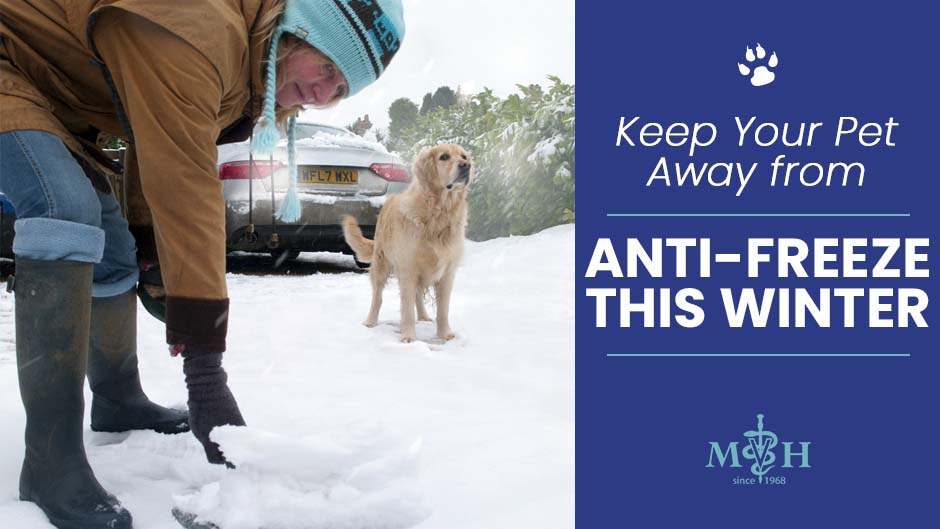What You Can Do to Prevent Antifreeze Poisoning in Your Pet
It’s important to consider things from your pet's point of view. She can't tell the difference between antifreeze and water, which means she may lap up a spill faster than you can clean it. For this reason, Minnesota Veterinary Hospital recommends keeping your pet far away from your vehicle and wiping up any spill as soon as you spot it. When storing antifreeze or any other product with ethylene glycol that poses a poisoning risk, place it on a high shelf where a curious pet can't reach it.
How to Recognize Antifreeze Poisoning
It's possible that a persistent pet could still get himself in trouble with antifreeze despite your attempts to prevent it. If you're concerned that happened, observe your pet for the following symptoms that take place in three stages:
- Stage I: These symptoms include drooling, excessive thirst, excessive urination, seizures, and vomiting. They typically occur within half an hour to 12 hours after your dog or cat consumed antifreeze.
- Stage II: Your pet will likely display the same symptoms over the next 12 to 24 hours. However, they tend to get worse even though they may appear the same to you.
- Stage III: Cats typically progress to Stage III 12 to 24 hours after ingesting antifreeze and dogs within 36 to 72 hours. Besides the symptoms listed above, look for lack of appetite, lethargy, depression, bad breath, and a comatose state.
Seek Treatment Immediately
Even if you're not sure that your pet drank antifreeze, we encourage you to call for an immediate appointment if he displays any of these symptoms. You can reach Minnesota Veterinary Hospital at 651-484-3331 during regular business hours. After hours, contact the Animal Emergency & Referral Service of Minnesota in St. Paul at 651-291-1337 or Oakdale at 651-501-3763.
Photo Credit: Blair Images / Getty Images

